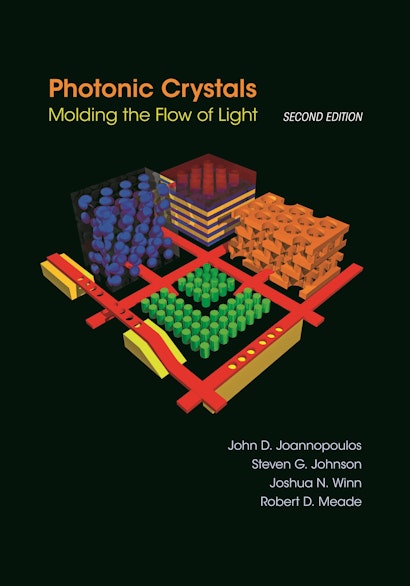Photonic Crystals: Molding the Flow of Light - Second Edition


Hardcover
- Price:
- $130.00/£105.00
- ISBN:
- Published:
- Mar 2, 2008
- Copyright:
- 2008
- Pages:
- 304
- Size:
- 7 x 10 in.
- 94 color illus. 5 tables.
- Main_subject:
- Physics & Astronomy
ebook
Since it was first published in 1995, Photonic Crystals has remained the definitive text for both undergraduates and researchers on photonic band-gap materials and their use in controlling the propagation of light. This newly expanded and revised edition covers the latest developments in the field, providing the most up-to-date, concise, and comprehensive book available on these novel materials and their applications.
Starting from Maxwell’s equations and Fourier analysis, the authors develop the theoretical tools of photonics using principles of linear algebra and symmetry, emphasizing analogies with traditional solid-state physics and quantum theory. They then investigate the unique phenomena that take place within photonic crystals at defect sites and surfaces, from one to three dimensions. This new edition includes entirely new chapters describing important hybrid structures that use band gaps or periodicity only in some directions: periodic waveguides, photonic-crystal slabs, and photonic-crystal fibers. The authors demonstrate how the capabilities of photonic crystals to localize light can be put to work in devices such as filters and splitters. A new appendix provides an overview of computational methods for electromagnetism. Existing chapters have been considerably updated and expanded to include many new three-dimensional photonic crystals, an extensive tutorial on device design using temporal coupled-mode theory, discussions of diffraction and refraction at crystal interfaces, and more. Richly illustrated and accessibly written, Photonic Crystals is an indispensable resource for students and researchers.
- Extensively revised and expanded
- Features improved graphics throughout
- Includes new chapters on photonic-crystal fibers and combined index-and band-gap-guiding
- Provides an introduction to coupled-mode theory as a powerful tool for device design
- Covers many new topics, including omnidirectional reflection, anomalous refraction and diffraction, computational photonics, and much more.
